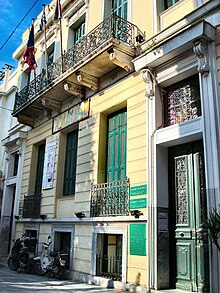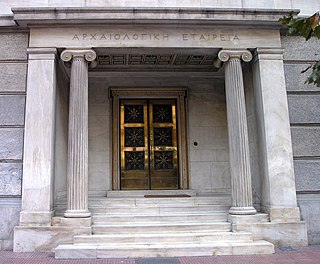
The Parthenon is a former temple on the Athenian Acropolis, Greece, that was dedicated to the goddess Athena during the fifth century BC. Its decorative sculptures are considered some of the high points of classical Greek art, an enduring symbol of Ancient Greece, democracy and Western civilization.

The Areopagus is a prominent rock outcropping located northwest of the Acropolis in Athens, Greece. Its English name is the Late Latin composite form of the Greek name Areios Pagos, translated "Hill of Ares". The name Areopagus also referred, in classical times, to the Athenian governing council, later restricted to the Athenian judicial council or court that tried cases of deliberate homicide, wounding, and religious matters, as well as cases involving arson of olive trees, because they convened in this location. The war god Ares was supposed to have been tried by the other gods on the Areopagus for the murder of Poseidon's son Halirrhothius.

The ancient Agora of Athens is the best-known example of an ancient Greek agora, located to the northwest of the Acropolis and bounded on the south by the hill of the Areopagus and on the west by the hill known as the Agoraios Kolonos, also called Market Hill. The Agora's initial use was for a commercial, assembly, or residential gathering place.

Phalerum or Phaleron was a port of Ancient Athens, 5 km southwest of the Acropolis of Athens, on a bay of the Saronic Gulf. The bay is also referred to as "Bay of Phalerum".

The Stoa of Attalos was a stoa in the Agora of Athens, Greece. It was built by and named after King Attalos II of Pergamon, who ruled between 159 BC and 138 BC. The building was reconstructed from 1952 to 1956 by the American School of Classical Studies at Athens and currently houses the Museum of the Ancient Agora.

Athens City Museum is an art museum and former royal residence in Athens, Greece. It houses a collection of Athens-related items collected by art collector Lambros Eutaxias (1905-1996). The collection includes antiquities, Byzantine art, sculptures, paintings, drawings, photographs and metal, glass and textile works. It also includes furniture arranged in typical living rooms of the Athenian aristocracy of the 19th century.
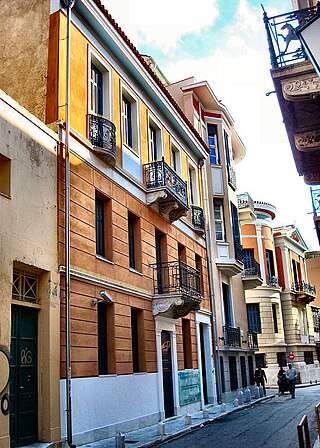
Frissiras Museum is a contemporary painting museum in Plaka Athens, Greece. It was founded and endowed by Vlassis Frissiras, an art-collecting lawyer. Its permanent collection consists of 3000 paintings and sculptures by Greek and other European artists on the subject of the human form.
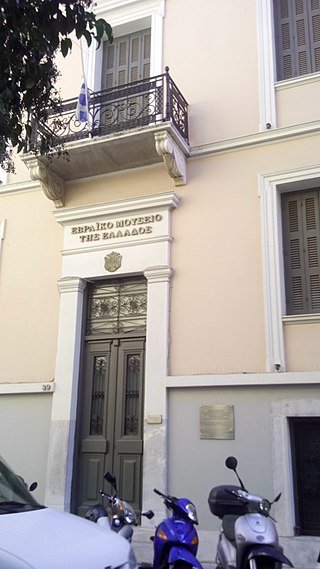
The Jewish Museum of Greece is a museum in Athens, Greece. It was established by Nicholas Stavroulakis in 1977 to preserve the material culture of the Greek Jews.

The Athens University Museum is a museum in Plaka, Athens, Greece.
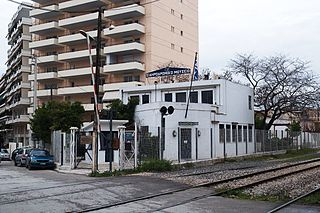
The Railway Museum of Athens, Greece, was founded by the Hellenic Railways Organisation (OSE) in 1978.

The Museum of Anthropology, University of Athens is an educational museum in Athens, Greece. It was founded at the University of Athens in 1886. The museum was initially established as part of the university's medical school, in its department of histology. The museum's founder, Klon Stephanos, has been described as the "father of physical anthropology" in Greece, Under Stephanos, the museum emphasized its function as research laboratory, rather than as a venue for public displays. It received many early contributions from the medical faculty in the area of anatomical pathology, as well as becoming an important repository within Greece for historical anthropological specimens that had in the past been sent to foreign institutions.
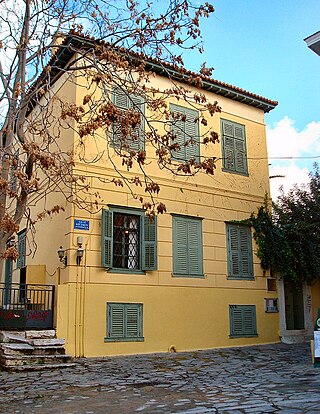
The Museum of Greek Folk Musical Instruments, is a museum and Research Centre for Ethnomusicology in the Lassanis Mansion, Plaka, Athens, Greece. It displays about 600 Greek musical instruments from the last 300 years and has as many more in store.

Museum of the History of the Greek Costume is a special interest museum in Athens, Greece. It was inaugurated by the former Minister of Culture, Melina Mercouri, in 1988 and is part of the Lyceum Club of Greek Women, a non profit society founded in 1911.

The Kotsanas Museum of Ancient Greek Technology is a museum focused on the technology and technological advances used and pioneered in Ancient Greece situated in Katakolo, Elis, Greece. It has three permanent annexes, Ancient Olympia and at Katakolon port, and has travelling exhibitions.

The Arrephorion or House of the Arrephoroi is a building conjectured to have been on the Acropolis of Athens based on a passage in Pausanias. The discovery of the foundations of a substantial building on the north-west edge of the Acropolis has led to the identification of this structure with the Arrephorion.

The Aglaureion, or the Sanctuary of Aglauros, was an ancient sanctuary located in the Acropolis in Athens, Greece. It was dedicated to Aglauros, a Greek mythological figure who was the daughter of King Cecrops and the sister of Erysichthon, Pandrosus, and Herse. The sanctuary was believed to be the site where Aglauros had sacrificed herself to protect the city from invasion.

The Electric Railways Museum of Piraeus is a railway museum in Piraeus, Athens, Greece. The museum was established in 2005 in the space of the former Post Office in Piraeus railway station. The museum displays a collection of small size items, photographs and documents related to the history of Athens-Piraeus Railway, Hellenic Electric Railways (EIS), Piraeus-Perama light railway, Piraeus Harbour tramway, Electric Transport Company (IEM) and Athens-Piraeus Electric Railways (ISAP). The museum also owns a collection of approximately 2000 small and medium size items and 3000 books, leaflets and other documents, currently in storage.
